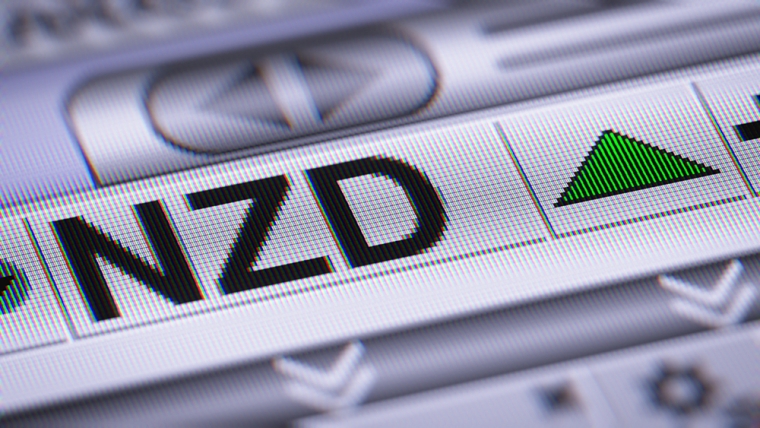
By Stuart Talman, XE currency strategist

The view that the worst of the banking turmoil has passed has brought calm to the market this week - sentiment leaning positive, volatility has subsided, risk assets trade with a modest upside bias.
The New Zealand dollar caught a bid through the Asian afternoon, trading up through a 0.6180 to 0.6210 range that had constrained price action in subdued trade, Monday. Gains have continued overnight, NZDUSD marking early morning highs a few pips beyond 0.6250.
A tiny range day on Monday followed by a firm move to the upside could be interpreted as a bullish technical development for the Kiwi, however, despite Tuesday’s gain of ~0.80%, NZD remains in the prevailing range of the past six weeks.
A topside breakout through 0.6270 resistance followed by consolidation above 0.6311 (50% Fib retracement, FEB. to MAR. downswing) required to signal a shift in directional bias from neutral to bullish.
One factor that may support the US dollar and cap the Kiwi’s upside is the bond market having to rethink its recent dramatic repricing, dialling back the probability of the Fed delivering rate cuts during the second half of 2023.
As fears of a widespread banking crisis spiked a week or two prior, bond yields plummeted, the assumption being that the Fed would have to implement emergency rate hikes to avoid a systemic banking failure. The yield curve unwound a significant amount of inversion, pricing in close to 100bps of easing from July onwards.
Confidence has been partially restored, market participants no longer worried about Credit Suisse, Silicon Valley Bank, Signature Bank and others. This in turn has lead rates markets to price out a July rate cut, now expecting circa 60bps of easing by the end of the year.
If market pricing continues to converge with Jay Powell’s view that the Fed will not be cutting in 2023, this likely generates a mild tailwind for the US dollar.

Confidence has not been fully restored, evidenced by the lack of directional conviction in US equity markets. Rebounding from its March 13 low once the FDIC announced that SVB depositors would be made whole, the S&P500 has range traded, attempting to re-establish a foothold above the 200-day moving average.
Yet to mount a challenge to major technical resistance at 4100 (currently trading in the mid to high 3900’s), the S&P500’s price action suggests that equity market bulls are wary of the Fed returning to its higher-for-longer mantra.
The S&P500 has shed around a half-a-percent with a couple of hours of US trade remaining whilst the Nasdaq’s declines exceed 1%.
Aside from the Aussie dollar, the Kiwi logged gains against its major peers, but remains pressured against the euro, pound, and yen. The EUR draws support from central bank relativities – the ECB now the most hawkish of major central banks whilst the recent global bond yield crunch and safe haven flows have aided the JPY.
We expect NZDEUR to challenge the October low at 0.5700 over the next few weeks. A break below here would mark fresh 2½ year lows for the pair.
ECB officials, including President Lagarde and the widely followed Isabel Schnabel have delivered speeches over the past 24 hours, both flagging the need to keep hiking rates. The ECB next meets of 04 May, widely expected to deliver another 50bps hike, lifting the deposit rate to 4.00%.
What are we keeping an eye on for Wednesday’s action?
The monthly CPI report for the Australian economy is the region’s major data point, the consensus forecast calling for a further easing of inflation from 7.4% to 7.1%. A downside surprise would add further weight to the case for an RBA pause at the April meeting. The RBA is widely expected to raise the cash rate by 25bps to 3.85% at next Tuesday’s meeting.
Yesterday’s retail sales data across the Tasman reported a 0.2% growth in household spending. Following volatile reads in November and December, the trend appears to be one of slowing spending as higher rates impact households across Australia.
The antipodean cross continues to range trade near recent prominent highs, NZDAUD price action tracking between 0.9300 and 0.9350 over the past 4 trading days. A break below 0.93 provides more evidence that the Kiwi was topped out against the Aussie.
It’s a very quiet night for offshore data releases. Central bank speakers will again be the focus.
Regarding NZDUSD levels, our attention is firmly fixed on the 0.6270/90 resistance zone. If the Kiwi can punch through here and consolidate above during the back half of this week, further upside beckons.
Failure to do so, the neutral bias is maintained.
Daily exchange rates
Select chart tabs
Stuart Talman is Director of Sales at XE. You can contact him here.

We welcome your comments below. If you are not already registered, please register to comment.
Remember we welcome robust, respectful and insightful debate. We don't welcome abusive or defamatory comments and will de-register those repeatedly making such comments. Our current comment policy is here.